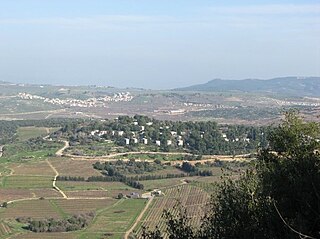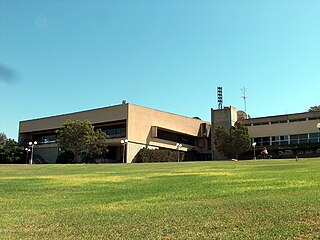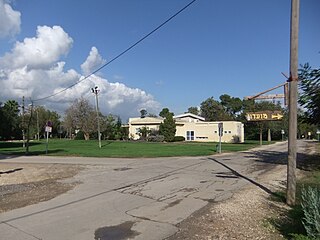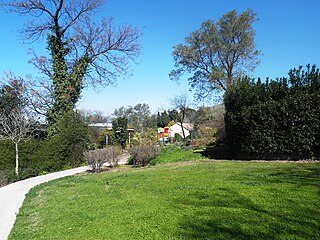
Histadrut HaNoar HaOved VeHaLomed, most commonly translated as Working and Studying Youth and colloquially known as Noar HaOved and abbreviated No'al, is an Israeli youth movement, a sister movement of Habonim Dror, and affiliated with the Labor Zionist movement. The organisation is a member of the International Falcon Movement – Socialist Educational International.

Yisrael Galili was an Israeli politician, government minister and member of Knesset. Before Israel's independence in 1948, he served as Chief of Staff of Haganah, the main Zionist paramilitary organization that operated for the Yishuv in the British Mandate for Palestine.

Sasa or Sassa is a kibbutz in the Upper Galilee area of northern Israel. Located one mile from the border with Lebanon, it falls under the jurisdiction of Upper Galilee Regional Council. In 2022 it had a population of 396.

Sa'sa' was a Palestinian village, located 12 kilometres northwest of Safed, that was depopulated by Israeli forces during the 1948 Arab-Israeli war. The village suffered two massacres committed by Haganah forces: one in mid-February 1948 and the other at the end of October the same year. Its place has been taken since 1949 by Sasa, an Israeli kibbutz.

Kabri is a kibbutz in northern Israel. Located in the Western Galilee about 4 kilometres (2 mi) east of the Mediterranean seaside town of Nahariya, it falls under the jurisdiction of Mateh Asher Regional Council. In 2022 it had a population of 1,120.
Gesher HaZiv is a kibbutz in northern Israel. Situated in the Western Galilee on the coastal highway between Nahariya and the Lebanese border, opposite the Akhziv National Park, it falls under the jurisdiction of Mateh Asher Regional Council. In 2022 it had a population of 1,631.

Manara is a kibbutz in northern Israel. Located on the Ramim Ridge of the Naftali Mountains, Upper Galilee, adjacent to the Lebanese border and overlooking the Hula Valley, it falls under the jurisdiction of Upper Galilee Regional Council. In 2022 it had a population of 284.

Maoz Haim is a kibbutz in Israel. It is located adjacent to the Jordan River in the Beit She'an valley and falls under the jurisdiction of Valley of Springs Regional Council. In 2022 it had a population of 505. Aside from agriculture, the kibbutz also has a plastics factory, "Poliraz".

Gesher is a kibbutz in the Beit She'an Valley in northeastern Israel. Founded in 1939 by Jewish refugees from Germany, it falls under the jurisdiction of Valley of Springs Regional Council. It is situated 10 km south of kibbutz Deganya Aleph and 15 km south of Tiberias. In 2022 it had a population of 462.

Hukok is a kibbutz in Israel. Located near the Sea of Galilee and the cities of Tiberias and Safed, it falls under the jurisdiction of Emek HaYarden Regional Council. In 2022 it had a population of 646.

Birya is an agricultural village in northern Israel. Located in the Upper Galilee near Safed, it falls under the jurisdiction of the Merom HaGalil Regional Council. As of 2022 its population was 872.

Givat HaShlosha is a kibbutz in central Israel. Located about 4 km east of Petah Tikva, near the Yarkon river, it falls under the jurisdiction of Drom Hasharon Regional Council. In 2022 it had a population of 922.

She'ar Yashuv is a moshav in northern Israel. Located in the Upper Galilee in the northeastern Hula Valley, it falls under the jurisdiction of Mevo'ot HaHermon Regional Council. In 2022 it had a population of 649.

Gazit is a kibbutz in northern Israel. Located in the Galilee, it falls under the jurisdiction of Jezreel Valley Regional Council. In 2022 it had a population of 807.

Ravid is a small kibbutz in northern Israel. Located to the west of the Sea of Galilee, it falls under the jurisdiction of Emek HaYarden Regional Council. In 2022 it had a population of 108.

Gonen is a kibbutz in northern Israel. Located in the Finger of the Galilee near Kiryat Shmona, the kibbutz falls under the jurisdiction of Upper Galilee Regional Council. In 2022 it had a population of 372.

Bror Hayil is a kibbutz in southern Israel. Located near Sderot, it falls under the jurisdiction of Sha'ar HaNegev Regional Council. In 2022 it had a population of 1,063.

Eshbal is a kibbutz in northern Israel, located in the Lower Galilee near Karmiel.

Al-Na'ani, also called Al-Ni'ana, was a Palestinian Arab village in the Ramle Subdistrict of Mandatory Palestine. It was depopulated during the 1948 Arab–Israeli War on May 14, 1948, by the Givati Brigade during Operation Barak. It was located 6 km south of Ramle.

Khan al-Duwayr was a Palestinian Arab village in the Safad Subdistrict. It was depopulated during the 1948 Arab-Israeli War on May 30, 1948, by the Palmach's First Battalion of Operation Yiftach. It was located 35 km northeast of Safad. The ruins of the village were overbuilt by the Israeli kibbutz of Snir.
























